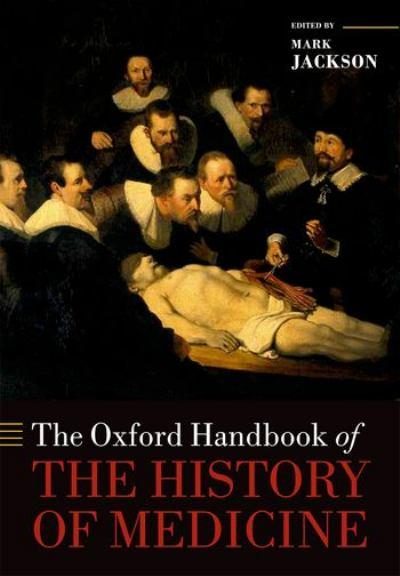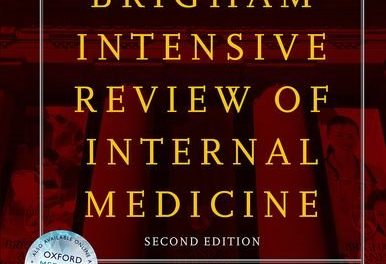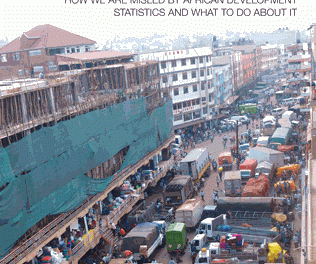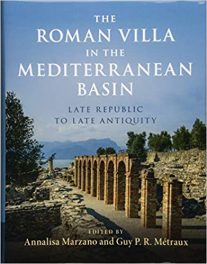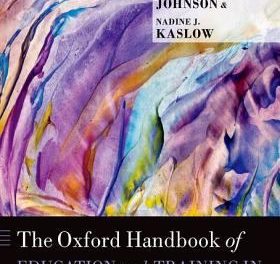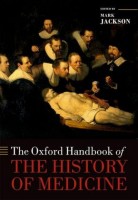 Editor: Mark Jackson
Editor: Mark Jackson
Publisher: Oxford University Press – 672 pages
Book Review by: Sonu Chandiram
This wide-ranging volume on the history of medicine around the world, with its 34 chapters, has been written through three different approaches:
- First, from a chronological approach in Part I (Periods) which covers the years from the Greco-Roman World (chapter 1) all the way to the contemporary history of medicine and health (chapter 7).
- Second, from a geographical approach in Part II (Places and Traditions) which, from chapters 8 through 17, encompasses global and local histories of medicine spanning the major regions of the world (listed here based on a sort of travel route): Australia and New Zealand, China, South Asia, the Middle East, Eastern Europe, Western Europe, Africa, and the United States.
- Third, on the basis of subject matter within medicine in Part III (Themes and Methods) which starts with childhood and adolescence, and continues with old age and death; and discusses common healthcare issues as they relate to demography, chronic illnesses, public health, political economy, work and the environment, women, sexuality, our mind, medical ethics and the law, and other considerations.
The 36 contributors of material to this book work mainly at research institutions, museums, and universities, and their specialties range from history to literature to medicine to pharmacology and even Victorian studies, as well as different areas of science and technology.
The editor states that he had two main purposes in producing this book. What it does is that
- “It looks backwards in order to provide not only a constructive analysis of developments in medical knowledge and practice at different moments in time and in different places, but it also gives a critical account of shifting approaches to prominent theoretical, conceptual and methodological issues within the history of medicine in recent decades.
- “It looks forward to consider how the history of medicine might develop in the future. Particularly in their conclusions, individual chapters thus attempt to establish, and promote discussion about, some of the major challenges facing future historians of medicine in terms of the questions, the sources and the methods that should direct and animate the evolution of the discipline.”
Based on these two aims, the editor Mark Jackson hopes this book provides a substantial factual base for future research as well as informed discussion about the purpose of having a history of medicine.
Through the first seven chapters in Part I (Periods) of this book, the reader is provided an Introduction in chapter 1, to a broad survey of medicine in the Greco-Roman period in chapter 2 with much importance given to Hippocrates – who wrote on medical ethics and provided the Hippocratic Oath to all new doctors – thus rightly being anointed with the title of ‘Father of Medicine’.
Galen was another notable person who did much to elevate the profession of medicine in society. With his experiments in dissection and pharmacology, he established an empirical basis for medical treatments. Discovering what worked and what did not, he laid the pathways for others to help alleviate the pain and suffering of ailing people, and earned himself the title of ‘Prince of Physicians’.
Between chapter 2 (Medicine and Health in the Greco-Roman World) and 7 (Contemporary History of Medicine and Health) are covered four other periods – in chapters 3 through 6 – which respectively deal with Medieval Medicine, Early Modern Medicine, Health and Medicine in the Enlightenment, and Medicine and Modernity.
We’ve already stated earlier the different regions of the world where the history and traditions in medicine are written about in Part II of this book, entitled Places and Traditions.
Part III, entitled “Themes and Methods” looks at different aspects of medicine and particular issues in chapters 18 through 34. These are issues covered in this part of the book: childhood and adolescence; medicine and old age; death; historical demography and epidemiology; chronic illnesses and disease history; public health; the political economy of health care in the nineteenth and twentieth centuries; health, work and environment: a Hippocratic turn in medical history;
Other issues covered in Part III are: history of science and medicine; women, health and medicine; health and sexuality; medicine and the mind; medical ethics and the law; medicine and species: one medicine, one history? histories of heterodoxy; oral testimony and the history of medicine; and medical film and television: an alternative path to the cultures of biomedicine.
The range of subjects covered in this important and valuable book and the three approaches to the history of medicine the editors employ, provide a solid base of information to the reader, as well as flexibility on how to view important developments and key discoveries in the history of medicine.
Whether you are a physician, other medical professional or simply someone interested in the history of medicine, this is a key volume to add to your collection. The amount of information in it is immense, and it is well laid out and presented. We congratulate all who played a part in putting it together.

